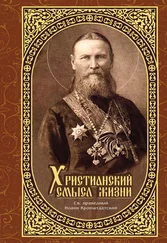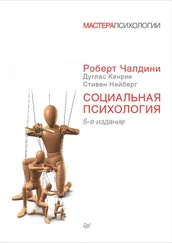Prose, F. (2002). The lives of the muses: Nine women and the artists they inspired. New York, NY: HarperCollins.
Richerson, P. J., & Boyd, R. (1998). The evolution of human ultrasociality. In I. Eibl-Eibisfeldt & F. Salter (Eds.), Ideology, warfare, and indoctrinability (pp. 71-95). New York, NY: Berghahn Books.
Roese, N., Pennington, G. L, Coleman, J., Janicki, M., Li, N. P, & Kenrick, D. T. (2006). Sex differences in regret: All for love or some for lust? Personality & Social Psychology Bulletin, 32, 770-780.
Roese, N. J., & Olson, J. M. (1997). Counterfactual thinking: The intersection of affect and function. Advances in Experimental Social Psychology, 29, 1-59.
Rose, H., & Rose, S. (2000). Introduction. In H. Rose and S. Rose (Eds.), Alas poor Darwin: Arguments against evolutionary psychology (pp. 1-13). London: Harmony Books.
Rowe, D. C. (1996). An adaptive strategy theory of crime and delinquency. In J. D. Hawkins (Ed.), Delinquency and crime: Current theories (pp. 268-314). New York, NY: Cambridge University Press.
Rozin, P, Haidt, J., & McCauley, C. R. (2000). Disgust. In M. Lewis & J. M. Haviland-Jones (Eds.), Handbook of emotions (2nd ed., pp. 637-653). New York, NY: Guilford Press.
Rozin, P, & Kalat, J. W. (1971). Specific hungers and poison avoidance as adaptive specializations of learning. Psychological Review, 78,459-486.
Sadalla, E. K., Kenrick, D. T, & Vershure, B. (1987). Dominance and heterosexual attraction. Journal of Personality & Social Psychology, 52, 730-738.
Sapolsky, R. M. (2002). A primate's memoir: A neuroscientist's unconventional life among the baboons. New York, NY: Scribner.
Schaller, M., Park, J. H., & Kenrick, D. T. (2007). Human evolution and social cognition. In R. I. M. Dunbar & L. Barrett (Eds.), Oxford handbook of evolutionary psychology (pp. 491-504). Oxford, England: Oxford University Press.
Schaller, M., Park, J. H., & Mueller, A. (2003). Fear of the dark: Interactive effects of beliefs about danger and ambient darkness on ethnic stereotypes. Personality & Social Psychology Bulletin, 29, 637-649.
Schmitt, D. P, & 118 Members of the International Sexuality Description Project. (2003). Universal sex differences in the desire for sexual variety: Tests from 52 nations, 6 continents, and 13 islands. Journal of Personality & Social Psychology , 85, 85-104.
Schoenberg, R. J. (1992). Mr Capone. New York, NY: William Morrow.
Schredl, M. (2009). Sex differences in dream aggression. Behavioral & Brain Sciences, 32, 287-288.
Seamon, J. G. (1980). Memory and cognition: An introduction. New York, NY: Oxford University Press.
Segerstrele, U. (2000). Defenders of the truth: The battle for science in the sociology debate and beyond. Oxford, England: Oxford University Press.
Servadio, G. (1976). Mafioso: A history of the Mafia from its origins to the present day. New York, NY: Stein & Day.
Shapiro, J. R., Ackerman, J. M., Neuberg, S. L., Maner, J. K., Becker, D. V., & Kenrick, D. T. (2009). Following in the wake of anger: When not discriminating is discriminating. Personality & Social Psychology Bulletin, 35, 1356-1367.
Sharif, A. F., Norenzayan, A., & Henrich, J. (2010). The birth of high gods: How the cultural evolution of supernatural policing influenced the emergence of complex, cooperative human societies, paving the way for civilization. In M. Schaller, S. Heine, A. Norenzayan, T. Yamagishi, & T. Kameda (Eds.), Evolution, culture, and the human mind (pp. 119-136). Mahwah, NJ: Erlbaum.
Sherman, P. W. (1988). The levels of analysis. Animal Behavior, 36, 616-619.
Sherry, D. F., & Schacter, D. L. (1987). The evolution of multiple memory systems. Psychological Review, 94, 439-454.
Sidanius, J., & Pratto, F. (1999). Social dominance: An intergroup theory of social hierarchy and oppression. New York, NY: Cambridge University Press.
Simpson, J. A., & Gangestad, S. W. (2001). Evolution and relationships: A call for integration. Personal Relationships, 8, 341-355.
Skinner, B. F. (1953). Science and human behavior. New York, NY: Free Press.
Stearns, S. C., Allal, N., & Mace, R. (2008). Life history theory and human development. In C. Crawford & D. Krebs (Eds.), Foundations of evolutionary psychology (pp. 47-70). New York, NY: Erlbaum.
Sundie, J. M., & Kenrick, D. T. (2006). Modular economics: Different bonds = different investments. Psychological Inquiry, 17, 56-59.
Sundie, J. M., Kenrick, D. T., Griskevicius, V., Tybur, J., Vohs, K., & Beal, D. J. (in press). Peacocks, Porsches, and Thorsten Veblen: Conspicuous consumption as a sexual signaling system .Journal of Personality & Social Psychology.
Tandon, A. (2004, May 2). Peacock in peril. Tribune of India. Retrieved from http://www. tribuneindia.com/2004/20040502/spectrum/mainl.htm.
Thaler, R. H., & Sunstein, C. R. (2008). Nudge: Improving decisions about health, wealth, and happiness. New Haven, CT: Yale University Press.
Thibaut, J., & Kelley, H. H. (1959). The social psychology of groups. New York, NY: Wiley.
Thornhill, R., & Gangestad, S. W. (1999). The scent of symmetry: A human sex pheromone that signals fitness? Evolution & Human Behavior, 20, 175-201.
Todd, P. M., & Gigerenzer, G. (2007). Mechanisms of ecological rationality: Heuristics and environments that make us smart. In R. I. M. Dunbar & L. Barrett (Eds.), Oxford handbook of evolutionary psychology (pp. 197-210). Oxford, England: Oxford University Press.
Tooby, J., & Cosmides, L. (1992).The psychological foundations of culture. In J. H. Barkow, L. Cosmides, & J. Tooby (Eds.), The adapted mind: Evolutionary psychology and the generation of culture (pp. 19-136). New York, NY: Oxford University Press.
Townsend, J. M., & Levy, G. D. (1990a). Effects of potential partner’s costume and physical attractiveness on sexuality and partner selection: Sex differences in reported preferences of university students. Journal of Psychology, 124 ,371-376.
Townsend, J. M., & Levy, G. D. (1990b). Effects of potential partner’s physical attractiveness and socioeconomic status on sexuality and partner selection. Archives of Sexual Behavior, 19, 149-164.
Trivers, Robert L. (1972). Parental investment and sexual selection. In B. G. Campbell (Ed.), Sexual selection and the descent of man (pp. 136-179). Chicago, IL: Aldine.
Turke, P. W., & Betzig, L. L. (1985). Those who can do: Wealth, status, and reproductive success on Ifaluk. Ethology & Sociobiology, 6, 79-87.
Twain, M. (1882). The prince and the pauper. New York, NY: James Osgood.
Tybur, J. M., Miller, G. F., & Gangestad, S. W. (2008). Testing the controversy: An empirical examination of adaptationists’ attitudes toward politics and science. Human nature: An interdisciplinary biosocial perspective, 18, 313-328.
VanderLaan, D. P, & Vasey, P. L. (2008). Mate retention behavior of men and women in heterosexual and homosexual relationships. Archives of Sexual Behavior, 37, 572-585.
Van Orden, G. C. (2002). Nonlinear dynamics and psycholinguistics. Ecological Psychology, 14, 1-4.
Van Orden, G. C., Holden, J. G., & Turvey, M. T. (2003). Self-organization of cognitive performance. Journal of Experimental Psychology-General, 132, 331-350.
Veblen, T. (1899/1994). The theory of the leisure class. New York, NY: Mentor Books.
Vohs, K. D., & Luce, M. F. (2010). Judgment and decision making. In R. F. Baumeister & E. J. Finkel (Eds.), Advanced social psychology: The state of science (pp. 733-756). New York, NY: Oxford University Press.
Читать дальше












